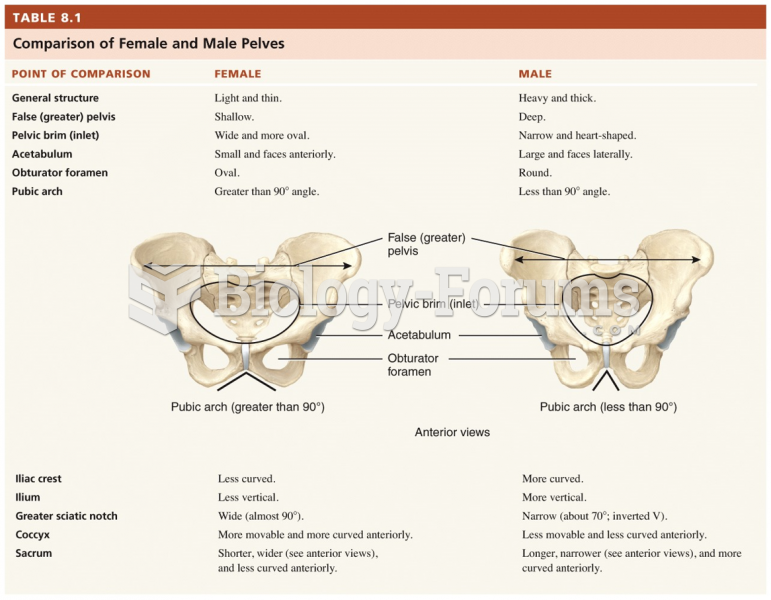Answer to Question 1
D
Feedback
A Incorrect. This is unethical; the nurse should avoid administering medication for pain without the patient's request.
B Incorrect. The patient shows signs of pain rather than blood loss.
C Incorrect. It is premature for the nurse to report the vital signs because the pa-tient's pain assessment is not complete.
D Correct. The patient's heart rate, respiratory rate, and blood pressure increased significantly since the admission vital signs, and indicate the potential for patient pain or discomfort from the surgical incision. The patient can be misun-derstanding the nurse's question or be barred from saying yes by cultural pat-terns. Such miscommunication is common, so the nurse rewords the question using another term for pain such as discomfort, burning, or pressure.
Answer to Question 2
B, E, F
Bone metastasis is likely to cause an older adult chronic pain because it is extremely difficult to eradicate cancer metastasis from bone. In addition, the invasion of cancer into bone can be very painful as a result of tumor growth pressing on nerves. Compression fractures are likely to cause chronic pain because the compressed vertebra is likely to press on spinal nerves, causing muscle spasms. Postherpetic neuralgia is a result of nerve damage from shingles and is likely to cause chronic pain; it is very difficult to treat effectively. A hip replacement is performed to relieve chronic pain or to repair a fracture and is more likely to cause acute pain. Hypoproteinemia is unlikely to cause chronic pain but is more likely to cause fatigue. A migraine headache is likely to cause acute, intense pain. Although headaches can be recurrent, they are usually time limited.






